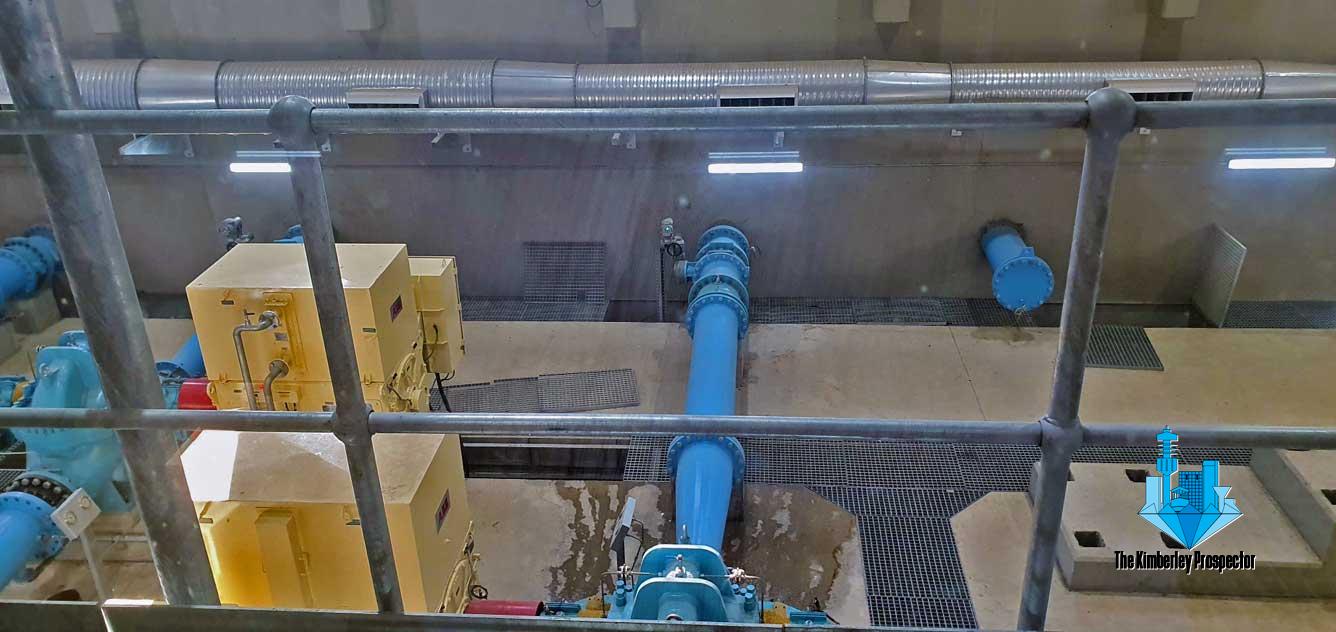Tumelo Mosikare, community leader and activists breaks down the process of how water makes its way from the Vaal river at the Riverton Water Treatment Works to your tap in Kimberley.
Step 1.
Mosikare says first the raw water is pumped out of the Vaal River in Riverton near Langleg resort.
The two big pumps pull the water up a tower into the purification plan. At this stage the water is raw river water. It is not yet clean and contains bio particles such as fish bacteria, he says.
Step 2.
Mosikare says the water is then pumped to the filtration section, which similar to that filter jack in a kitchen, the water goes through various levels of filters such as sand, charcoal and fine rocks.
The water is then taken to the Clarifier dams where excess particles are removed.
“Chlorine is then added to the water and it goes to the Pump House.”
Step 3.
“The water is pumped through two pipes, a 60 cm and a 90cm pipe. This water has high pressure and it can cut through flesh. The pipes stretch from Riverton over 30km to Kimberley, passing through Roodepan, Kasi and other parts leading to Town … passing near the Mental hospital and then turning to the town to the holding dams at the Newton Reservoir.”
Step 4.
“Water goes into the Reservoir as a result of the high pressure from over 30km away from the river. Should valves be opened on the way to allow water to the areas near the pipe then less water goes into the Reservoir at the end point. Should there be a leak on the way, then less water gets to the Newton Reservoir. Should valves be closed leading into the Reservoir then no water would go into the Reservoir,” Mosikare says.
The Reservoir has 4 Dams
And the they hold Millions of Liters of Water, he says.
Dam A.
Holds 23 Million Liters of water and is 16 feet deep (5.8m).
Dam B.
Holds 45 Million Liters of water and is also 16 feet deep (5.8m).
Dam C.
Holds 91 Million Liters of water and is 12 feet deep (3.6m).
Dam E.
Holds 102 Million Liters of water and is also 16 feet deep (5.8m).
“Collectively the dams hold 261 million litres of water. Added to this, the pipe from Riverton to Kimberley holds +/- 35 million litres of water.”
“Should the system be at full capacity, with no water leaking or being used, then there should be 296 million litres of water available.”
Step 5.
“Water is pumped to the higher laying areas. Remember the River is at a lower level than the city geographically, so the pumps are huge and put pressure on the water to move up the incline to the city. However, once the water reaches the Newton Reservoir in the city it has to be pumped again to reach even higher laying areas.”
“They use the tower at Newton Reservoir to create the necessary gradient to pump the water to the higher areas without causing break downs.”
“The pumps at Newton, should there not be enough water in the system would eventually pump air into the pipes and this air ends up coming through the meter into the yard out of the tap.”
“Should they pump air for a period, they would break down.”
Shortage of water?
“The River flows, unlike the areas which get their water from a Dam, we get our water from the River directly. Should there be low levels at the River lesser water will be drawn from it (this would be observed ‘easily’) the pumps would pull more air than water or dirty water, the pressure would also drop.”
“Should there be a shortage of chemicals to clean/treat the water to get rid of all bacteria or organic matter, then lesser water would be cleaned and lesser water would end up being sent to Kimberley. This would result in the reservoir levels at Newton dropping. this is also “easily” observable. They would need to monitor the level gages at the top of the dams to see the feet the water is at, meaning prior to closing the water off they would be able to notice it hours or an hour before it actually happens.”
“Should there be major leaks on the two pipes, the pressure gage at Riverton would show it and this will result in less water also getting to Newton.”
“Should the valves be closed leading up to Newton or not be properly opened, this would lead to increased pressure in the line leading up to Newton if the water is not used downstream and this would lead to frequent bursts decreasing the amount of water reaching Newton.”
“Now with the above explained, how is it difficult to point out what or where the problem is if there are people who have experience and the qualifications working this system?”
“Why must the Mayoral committee sit in a strategic meeting to find out what is happening when they do not have the expertise (I speak under correction), to first point out where the problem is and communicate it clearly with us?”
“Why has the problem persisted for so long?”
“Mind you ageing infrastructure cannot be used as an excuse if upwards of R100million has already been spent on the system in the past decade alone.”
“Why are games being played with people’s lives (Covid, stagnating sewerage due to lack of water and the fumes coming from there, economic lockdown resulting in job losses due to water not being available, school kids who go to school twice a week who are supposed to pass at the end of the year and cannot attend a full school day, the hospitals) the list is long.”
Mosikare concludes by asking: “DO THEY CARE?”
Tags: Tumelo Mosikare